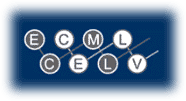

Checklists developed in Finland
Eeva Tuokko
![]()
The "I Can"-checklists included in this material are based on the Common European Framework of Reference for Languages (CEF). They contain descriptors presented in a slightly modified format, developed in the Finnish context to reflect the levels that Finnish students are expected to have reached in English, ranging from A2 (when entering their upper secondary studies) to C1 (at the end of their studies). The students would be 16-19 of age, and have studied the language for 7-10 years with 2-3 lessons a week.
The aim of this instrument is manifold, e.g.:
- to help the student estimate the level of his/her language skills and be aware of what is needed to reach the next step, at the same time offering him/her a way to monitor their own progress;
- to give the parents an indication of what the student is expected to learn;
- to provide the teacher with a basis for operationalizing the objectives of the national curriculum, which should also help him/her select what is relevant in the teaching materials and add what is missing.
The top grids, printed in italics, are a slightly modified version of the Common Reference Levels (CEF: p. 32), combined with the Swiss version of the European Language Portfolio. The ones below them are more detailed descriptions based on those from the Swiss version of the European Language Portfolio. In modifying the latter, an attempt was made to arrange the descriptors vertically in the order of difficulty starting with the easiest objectives at the top and ending with the most demanding ones at the bottom. Similarly, some re-arrangement was made to place the descriptors dealing with the same skill next to each other horizontally to show the progress more clearly.
If the checklists are going to be used as such, the idea is that the student estimates his/her skills and fills in the table by writing the date, on which s/he thinks s/he has reached the level described. He will then see what is expected from him to reach the next level. S/He will also notice that s/he may not be on the same level in all his/her language skills and thus know what should be improved. The test will then show how correct s/he was in his estimates. This is how s/he will learn to assess his/her own development.
The ideal further use of the checklists would be for the teacher to have
more detailed descriptors based on the teaching material. In other words,
good teaching materials should contain an account for what the learners
are supposed to learn when studying those particular texts. In time, we
seem to be moving in that direction when more and more transparency and
accountability is expected from those involved in teaching.

